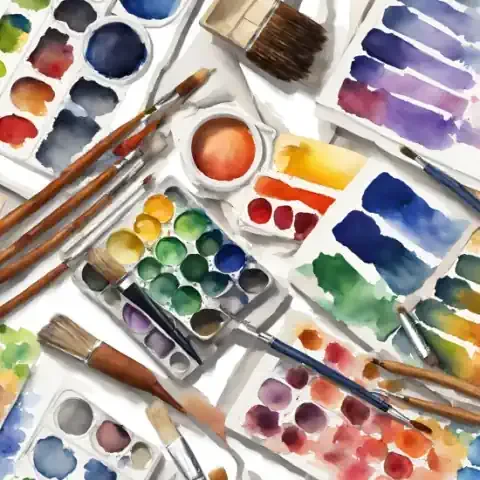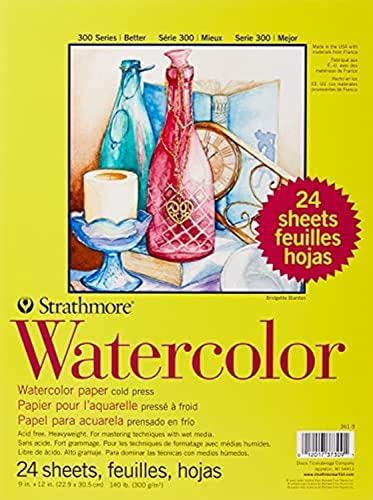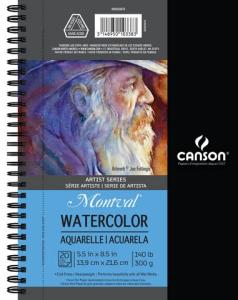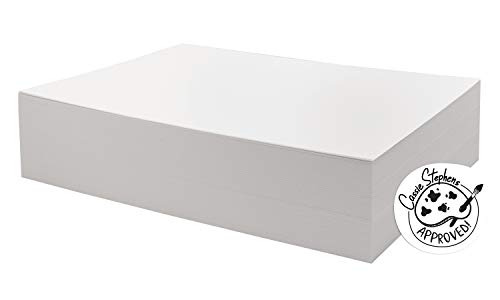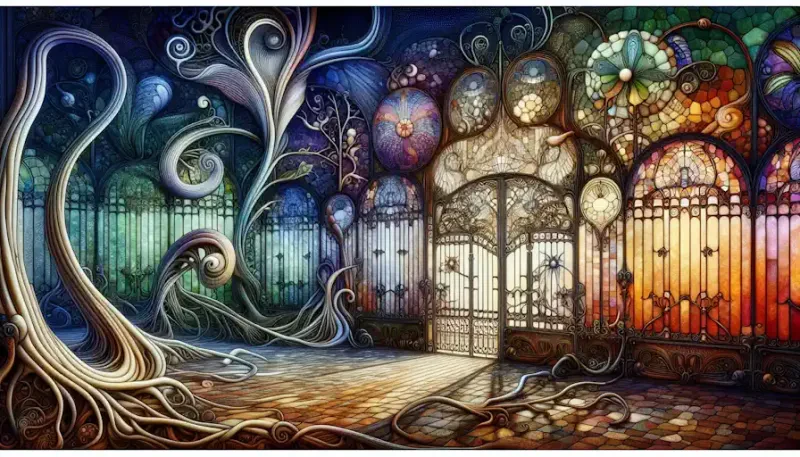Introduction
Watercolor painting is a captivating art form that has intrigued artists for centuries. Its unique blend of transparency, luminosity, and fluidity offers endless possibilities for creative expression. For beginners, diving into the world of watercolor can be both exciting and daunting. However, with the right guidance and essential supplies, anyone can embark on a fulfilling journey of artistic exploration.
The Allure of Watercolor Painting for Beginners
Watercolor painting possesses a distinct charm that attracts beginners and seasoned artists alike. Unlike other mediums, such as acrylics or oils, watercolors offer a delicate translucency that lends a sense of ethereal beauty to artwork. The ability to create subtle gradients, vibrant washes, and intricate details with just a few simple tools is what makes watercolor so alluring to beginners.
Moreover, watercolor's forgiving nature allows for experimentation and improvisation. Mistakes can be embraced and even incorporated into the final piece, fostering a sense of freedom and spontaneity. For beginners, this aspect of watercolor can be particularly liberating, as it encourages exploration without the fear of perfection.
The Versatility and Accessibility of the Medium
One of the most appealing aspects of watercolor painting is its versatility. Whether you're interested in landscapes, portraits, still lifes, or abstracts, watercolor offers a wide range of possibilities. From loose and expressive brushwork to intricate details, there are countless techniques to explore and master.
Additionally, watercolor is a relatively accessible medium, requiring minimal setup and cleanup. Unlike oil painting, which involves toxic solvents and lengthy drying times, watercolor can be easily cleaned up with water and dries quickly, allowing artists to work efficiently and spontaneously. This accessibility makes watercolor an ideal choice for beginners looking to dive into painting without investing in expensive equipment or dedicated studio space.
The Importance of Selecting the Right Supplies
While watercolor painting may seem straightforward on the surface, choosing the right supplies is crucial for success, especially for beginners. The quality of your materials can greatly impact the outcome of your artwork, influencing factors such as color intensity, brush control, and paper absorbency. By investing in the right supplies from the start, beginners can set themselves up for a more enjoyable and rewarding painting experience.
In the following sections, we'll explore the essential watercolor supplies that every beginner should have in their toolkit. From paints and brushes to paper and palettes, we'll discuss the characteristics of each item and provide guidance on selecting the best options for your needs. With the right supplies at your disposal, you'll be well-equipped to embark on your watercolor journey with confidence and creativity.
Quality vs. Budget: Understanding Your Options
Navigating the world of watercolor supplies can be overwhelming, especially for beginners faced with a myriad of options ranging from artist-grade to student-grade materials. Understanding the differences between quality and budget options is essential for making informed decisions that align with your artistic goals and budget constraints.
Artist-Grade and Student-Grade Supplies
Artist-grade watercolor supplies are formulated with high-quality pigments and binders, resulting in richer, more vibrant colors and superior lightfastness. These paints, brushes, and papers are designed to meet the demanding standards of professional artists and are often priced accordingly. While artist-grade supplies offer unparalleled performance and longevity, they may not be necessary for beginners who are still exploring the medium.
On the other hand, student-grade supplies are formulated with less expensive pigments and may contain fillers or extenders to reduce costs. While they may not offer the same level of color intensity or permanence as artist-grade materials, student-grade supplies are perfectly suitable for beginners who are still honing their skills and experimenting with different techniques. Additionally, student-grade supplies are generally more affordable, making them an attractive option for those on a tight budget.
Pros and Cons of Investing in Higher-Quality Materials
Investing in artist-grade watercolor supplies can offer several benefits for beginners who are serious about pursuing watercolor painting as a long-term hobby or profession. Higher-quality paints offer richer, more vibrant colors with superior lightfastness, ensuring that your artwork will stand the test of time. Similarly, high-quality brushes hold their shape better and provide better control over paint application, allowing for more precise and expressive brushwork.
However, the cost of artist-grade supplies can be prohibitive for beginners, especially those who are just starting out or exploring watercolor painting as a casual hobby. While the performance and longevity of artist-grade materials may justify the higher price tag for serious artists, beginners may find that student-grade supplies offer sufficient quality for their needs at a more affordable price point.
Balance Between Quality and Affordability for Beginners
For beginners, striking a balance between quality and affordability is key when selecting watercolor supplies. While it's tempting to splurge on the highest-quality materials available, especially when starting a new artistic pursuit, it's important to consider your budget and level of commitment to the medium.
Starting with student-grade supplies allows beginners to explore watercolor painting without breaking the bank, while still achieving satisfactory results. As beginners gain experience and confidence in their skills, they can gradually invest in higher-quality materials to further enhance their artwork.
Ultimately, the best watercolor supplies for beginners are those that suit their individual needs, preferences, and budget constraints. By understanding the differences between quality and budget options and carefully considering their priorities, beginners can make informed decisions that set them up for success on their watercolor journey.
Watercolor Paints: Choosing Your Palette
Watercolor paints are the heart and soul of any watercolor painting, dictating the color scheme, mood, and visual impact of the artwork. For beginners, selecting the right palette of watercolor paints is crucial for achieving desired results and exploring different techniques.
Different Types of Watercolor Paints Available
Watercolor paints come in two main forms: tubes and pans. Tube watercolors consist of concentrated pigment suspended in a water-based binder and are typically squeezed onto a palette and diluted with water before painting. Pans, on the other hand, are solid blocks of dried watercolor paint that can be activated with a wet brush.
Tubes are favored by many professional artists for their intensity of color and versatility, as they allow for more control over color mixing and consistency. Pans, on the other hand, are convenient for travel and outdoor painting, as they are compact and less prone to drying out.
The Importance of Color Selection for Beginners
Choosing the right colors for your watercolor palette is essential for achieving harmonious and expressive artwork. While the temptation to invest in a wide range of colors may be strong, beginners are advised to start with a limited palette of essential colors that can be mixed to create a variety of hues and shades.
A basic palette typically consists of warm and cool versions of the primary colors (red, yellow, and blue), along with a few earth tones and neutral shades. This allows beginners to experiment with color mixing and learn how different colors interact with each other.
Guidance on Selecting a Basic Palette
When assembling a basic watercolor palette for beginners, it's important to choose colors that are versatile and easy to work with. Opt for transparent, lightfast pigments that offer good color saturation and mixing properties.
Some essential colors to include in a beginner's palette may include:
Cadmium Red
Lemon Yellow
Ultramarine Blue
Burnt Sienna
Hooker's Green
These colors can be mixed to create a wide range of secondary and tertiary colors, making them ideal for beginners who are still learning how to control their palette and mix colors accurately.
By starting with a basic palette of essential colors, beginners can develop a solid foundation in color theory and painting techniques, laying the groundwork for more advanced experimentation and exploration in the future.
Brushes: The Tools of the Trade
Watercolor brushes are indispensable tools that allow artists to apply paint to paper with precision, control, and expressive freedom. Understanding the different types of watercolor brushes and their characteristics is essential for beginners looking to invest in quality tools for their artistic journey.
Various Types of Watercolor Brushes
Watercolor brushes come in a variety of shapes, sizes, and materials, each designed for specific purposes and techniques. Some common types of watercolor brushes include:
Round Brushes: Versatile and widely used for various painting techniques, including washes, details, and fine lines.
Flat Brushes: Ideal for creating broad strokes, washes, and sharp edges.
Filbert Brushes: Rounded, flat brushes with a tapered tip, suitable for blending and softening edges.
Mop Brushes: Large, soft brushes with a full belly, perfect for applying washes and creating soft, blended effects.
Rigger Brushes: Long, thin brushes with a fine point, ideal for painting fine lines, details, and calligraphy.
Each type of brush offers unique qualities and advantages, allowing artists to achieve different effects and textures in their artwork.
Significance of Brush Quality and Its Effect on Painting Techniques
The quality of watercolor brushes can greatly impact the outcome of a painting, influencing factors such as paint application, brush control, and durability. High-quality brushes are typically made from natural hair (such as sable, squirrel, or goat) or synthetic fibers, each offering distinct properties and performance characteristics.
Natural hair brushes are prized for their superior water retention, springiness, and ability to hold a fine point, making them ideal for precise and controlled painting techniques. Synthetic brushes, on the other hand, are more affordable and durable, making them a practical choice for beginners and artists on a budget.
Investing in quality brushes is essential for beginners looking to develop their painting skills and achieve professional results. While high-quality brushes may come with a higher price tag, their superior performance and longevity make them a worthwhile investment for serious artists.
Recommendations for Essential Brush Sizes and Shapes Suitable for Beginners
For beginners, it's essential to have a selection of brushes that cover a range of sizes and shapes to accommodate different painting techniques and styles. A basic set of watercolor brushes may include:
Size 6 or 8 Round Brush: Versatile for various painting tasks, including washes, details, and fine lines.
Size 1 or 2 Round Brush: Ideal for small details and intricate work.
1/2 inch Flat Brush: Suitable for creating broad strokes, washes, and sharp edges.
Large Mop Brush: Perfect for applying washes and creating soft, blended effects.
By starting with a selection of essential brush sizes and shapes, beginners can explore different painting techniques and develop their skills with confidence and ease. As they progress in their artistic journey, they can expand their brush collection to include specialized brushes for specific tasks and techniques.
Paper: The Foundation for Success
Watercolor paper serves as the foundation for any watercolor painting, providing the surface on which the paint adheres and allowing for the subtle blending of colors and textures. Selecting the right watercolor paper is essential for achieving desired results and ensuring the longevity of your artwork.
The Importance of Selecting the Right Watercolor Paper
Watercolor paper is specifically designed to withstand the unique challenges of watercolor painting, including repeated wetting, lifting, and blending of colors. Unlike regular drawing or printing paper, watercolor paper is made from cotton or cellulose fibers, which have greater absorbency and strength to handle the demands of wet-on-wet painting techniques.
Choosing the right watercolor paper is crucial for achieving optimal results in your artwork. Factors to consider include paper weight, texture, and sizing, all of which can influence how the paint behaves and the overall appearance of the finished piece.
Different Types of Watercolor Paper
Watercolor paper comes in various types, including cold-pressed, hot-pressed, and rough, each offering unique textures and characteristics.
Cold-Pressed (or Not) Paper: Cold-pressed paper is the most popular choice among watercolor artists, featuring a textured surface that provides a good balance between absorbency and smoothness. Not (or hot-pressed) paper has a smoother surface, ideal for detailed work and smooth washes.
Rough Paper: Rough paper has a pronounced texture, creating interesting surface effects and enhancing the appearance of brushstrokes and granulation.
The choice of paper texture depends on personal preference and the desired aesthetic for your artwork. Experimenting with different types of paper can help you discover which surface best suits your style and technique.
Guidance on Choosing the Appropriate Paper Weight and Size
Watercolor paper is available in various weights, typically measured in pounds (lb) or grams per square meter (gsm). Heavier-weight paper (e.g., 140 lb or 300 gsm) is more durable and less prone to buckling or warping when wet, making it suitable for wet-on-wet techniques and multiple layers of paint. Lighter-weight paper (e.g., 90 lb or 190 gsm) may require stretching or taping down to prevent buckling during painting.
When selecting watercolor paper, consider the size of your artwork and the level of detail you wish to achieve. Larger paintings may require larger sheets of paper or watercolor blocks, while smaller paintings can be done on individual sheets or pads. Additionally, consider the aspect ratio of the paper (e.g., standard sizes like 9"x12" or 11"x14") and how it complements your composition.
By choosing the right watercolor paper for your artistic needs and preferences, you can create artwork that showcases the beauty and versatility of the medium while ensuring its longevity and durability for years to come.
Palettes: Mixing and Storing Colors
A palette is an essential tool for watercolor painters, serving as both a mixing surface for blending colors and a storage container for keeping paints fresh during painting sessions. Understanding the different types of palettes and their functions is crucial for beginners looking to streamline their painting process and achieve optimal color mixing results.
Role of Palettes in Watercolor Painting
Palettes play a central role in the watercolor painting process, facilitating the mixing of colors and the creation of custom color blends. A well-designed palette provides a smooth, non-absorbent surface for easy mixing and blending of paints, allowing artists to achieve the desired color intensity and consistency.
Additionally, palettes serve as a convenient storage solution for keeping paints organized and accessible during painting sessions. By arranging colors systematically on the palette, artists can quickly locate and retrieve the paints they need, minimizing interruptions and maximizing productivity.
Types of Palettes
Watercolor palettes come in various types and materials, each offering distinct advantages and characteristics:
Porcelain Palettes: Porcelain palettes are durable, non-porous, and easy to clean, making them ideal for mixing and storing watercolor paints. They come in various shapes and sizes, including rectangular, oval, and round, to accommodate different preferences and painting styles.
Plastic Palettes: Plastic palettes are lightweight, portable, and inexpensive, making them a popular choice for beginners and artists on the go. While not as durable as porcelain palettes, plastic palettes are easy to clean and come in a range of designs, including folding and stackable options for compact storage.
Homemade Palettes: Some artists prefer to create their own custom palettes using materials such as ceramic tiles, glass panels, or plastic trays. Homemade palettes offer flexibility and customization options, allowing artists to design a palette that suits their unique needs and preferences.
The choice of palette depends on factors such as durability, portability, and personal preference. Experimenting with different types of palettes can help you discover which one best suits your painting style and workflow.
Tips for Efficient Color Mixing and Storage
Efficient color mixing and storage are essential skills for watercolor painters, allowing them to create harmonious color schemes and maintain consistency throughout their artwork. Some tips for efficient color mixing and storage include:
Start with a clean palette: Before starting a painting session, ensure that your palette is clean and free of any dried paint residue. This will prevent contamination and ensure accurate color mixing.
Use a limited color palette: Limiting the number of colors on your palette can simplify the mixing process and encourage experimentation with color mixing and blending techniques.
Keep paints moist: To prevent paints from drying out during painting sessions, mist them with water periodically or cover them with a damp paper towel or plastic wrap. This will keep the paints moist and workable for longer periods.
Label colors: To avoid confusion and ensure consistency in your artwork, label each color on your palette with its name or code. This will help you quickly identify and retrieve the colors you need during painting sessions.
By following these tips and techniques, beginners can master the art of color mixing and storage, unlocking endless creative possibilities in their watercolor paintings.
Other Essential Tools and Accessories
In addition to paints, brushes, paper, and palettes, there are several other tools and accessories that can enhance the watercolor painting experience for beginners. Understanding the purpose and functionality of these supplementary materials is essential for building a well-rounded toolkit and achieving optimal results in your artwork.
Additional Tools and Accessories
While paints, brushes, paper, and palettes form the core of a watercolor painter's toolkit, several supplementary tools and accessories can aid in various aspects of the painting process. Some essential tools and accessories for watercolor painting include:
Masking Fluid: Used to preserve areas of white paper or create fine details by blocking out paint.
Water Containers: Used for rinsing brushes and diluting paint during painting sessions.
Masking Tape: Used to secure paper to a drawing board or create clean edges and borders in paintings.
Palette Knife: Used for mixing paint on the palette and applying paint to the paper with texture and impasto effects.
These tools and accessories can help beginners expand their creative possibilities and refine their techniques, allowing for greater control and precision in their artwork.
Purpose of Each Tool
Each tool and accessory in a watercolor painter's toolkit serves a specific purpose and function:
Masking Fluid: Allows artists to create areas of white space or fine details by blocking out paint on the paper's surface.
Water Containers: Provide a convenient and accessible source of water for rinsing brushes and diluting paint during painting sessions.
Masking Tape: Secures paper to a drawing board or other surface, preventing it from buckling or warping during painting, and creates clean edges and borders in paintings.
Palette Knife: Used for mixing paint on the palette and applying paint to the paper with texture and impasto effects, such as scraping or lifting paint.
Understanding how to use each tool effectively can help beginners achieve desired effects and enhance the overall quality of their artwork.
Relevance to Beginner-Level Painting
While some tools and accessories may seem advanced or specialized, many are essential for beginners looking to develop their skills and explore different techniques in watercolor painting. By familiarizing themselves with these tools and accessories early on, beginners can gain confidence and proficiency in their artwork, setting the stage for continued growth and exploration in the medium.
Additionally, experimenting with different tools and accessories can spark creativity and inspire new ideas, leading to unique and innovative approaches to watercolor painting. As beginners gain experience and confidence in their skills, they can gradually expand their toolkit and incorporate more advanced tools and techniques into their artwork.
Overall, the tools and accessories discussed in this section are essential for beginners looking to build a solid foundation in watercolor painting and unleash their creativity in the medium. By investing in quality tools and learning how to use them effectively, beginners can embark on a rewarding artistic journey filled with endless possibilities and opportunities for growth.
Supplementary Materials: Expanding Your Toolkit
As beginners progress in their watercolor painting journey, they may find it beneficial to explore supplementary materials that can expand their toolkit and enhance their artistic capabilities. Understanding the purpose and functionality of these materials is essential for aspiring watercolor artists looking to take their skills to the next level.
Supplementary Materials for Watercolor Painting
While paints, brushes, paper, and palettes form the foundation of a watercolor painter's toolkit, there are several supplementary materials that can further enrich the painting experience. Some essential supplementary materials for watercolor painting include:
Masking Fluid: A liquid latex compound used to mask areas of the paper and preserve them from paint. It allows artists to create crisp edges, highlights, and intricate details in their paintings.
Watercolor Pencils: Colored pencils with water-soluble pigment cores that can be used dry for sketching and drawing or wet for adding color and detail to watercolor paintings.
Gum Arabic: A binder and thickening agent used to enhance the flow and transparency of watercolor paint. It can be added to paint mixtures to increase their viscosity and improve adhesion to the paper.
Sponge: Used for creating textured effects, lifting paint, and applying washes in watercolor paintings. Sponges come in various shapes and textures and can be used to achieve a range of effects, from soft gradients to intricate patterns.
These supplementary materials offer additional versatility and flexibility in watercolor painting, allowing artists to explore new techniques and experiment with different effects in their artwork.
How These Materials Can Expand Creative Possibilities
Supplementary materials can inspire creativity and open up new avenues for artistic expression in watercolor painting. For example:
Masking Fluid enables artists to create intricate designs, textures, and patterns by selectively blocking out areas of the paper and preserving them from paint.
Watercolor Pencils can be used to add fine details, highlights, and texture to watercolor paintings, allowing for greater control and precision in the application of color.
Gum Arabic enhances the flow and transparency of watercolor paint, making it easier to achieve smooth washes, glazes, and gradients with vibrant, translucent colors.
Sponges offer a versatile tool for creating a wide range of textured effects, from soft washes and gradients to bold patterns and irregular shapes.
By incorporating supplementary materials into their toolkit, beginners can expand their creative possibilities and explore new techniques and effects in their watercolor paintings. Experimenting with these materials can spark inspiration and lead to innovative approaches to painting, enriching the artistic process and enhancing the overall quality of the artwork.
Exploration and Experimentation
As beginners become more familiar with watercolor painting and gain confidence in their skills, they should feel encouraged to experiment with different materials, techniques, and effects. Exploring supplementary materials can help beginners develop their artistic style, refine their techniques, and push the boundaries of their creativity in watercolor painting.
We encourage beginners to embrace experimentation and to be open to trying new things in their artwork. Whether it's testing out a new brush technique, experimenting with a different color palette, or incorporating supplementary materials into their paintings, encourage beginners to approach their artwork with curiosity, enthusiasm, and a willingness to explore.
By encouraging exploration and experimentation, beginners can discover new techniques, develop their skills, and unlock their full creative potential in watercolor painting. As they continue to grow and evolve as artists, they'll find that the possibilities for expression and creativity are truly limitless in the vibrant and versatile world of watercolor painting.
Tips for Care and Maintenance
Proper care and maintenance of watercolor supplies are essential for ensuring their longevity and optimal performance. By following simple guidelines for cleaning, storing, and preserving supplies, beginners can prolong the life of their materials and enjoy consistent results in their artwork.
Guidelines for Proper Care and Maintenance
Taking care of watercolor supplies involves several key practices:
Brush Care: After each painting session, rinse brushes thoroughly with clean water to remove any remaining paint. Avoid leaving brushes soaking in water for extended periods, as this can damage the bristles. Store brushes upright in a brush holder or lay them flat to dry completely before storing.
Paint Care: Keep paint tubes tightly capped when not in use to prevent them from drying out. Avoid exposing paints to extreme temperatures or direct sunlight, as this can affect their consistency and color. Periodically check paints for signs of drying or separation, and remix as needed to restore their texture and vibrancy.
Paper Care: Store watercolor paper in a cool, dry place away from direct sunlight and moisture to prevent warping or discoloration. Avoid bending or creasing paper, as this can affect its flatness and absorbency. If storing paper for extended periods, consider using acid-free paper storage materials to prevent yellowing or deterioration over time.
Palette Care: Clean palettes regularly with soap and water to remove dried paint residue and prevent contamination between painting sessions. Avoid using abrasive cleaners or solvents, as these can damage the surface of the palette. Dry palettes thoroughly before storing to prevent mold or mildew growth.
Additional Tips: Avoid eating or drinking near your painting area to prevent accidental spills or contamination of supplies. Use a separate container for dirty water used for brush rinsing to avoid contaminating clean water or accidentally transferring paint residue to your artwork.
By incorporating these care and maintenance practices into their routine, beginners can prolong the life of their watercolor supplies and ensure consistent performance in their artwork. Taking the time to properly care for supplies also fosters a sense of respect and appreciation for the tools of the trade, enhancing the overall painting experience.
Importance of Regular Maintenance
Regular maintenance of watercolor supplies is essential for preventing damage, preserving quality, and ensuring reliable performance over time. By incorporating care and maintenance practices into their painting routine, beginners can prolong the life of their supplies and enjoy consistent results in their artwork.
Encourage beginners to develop a habit of cleaning and storing their supplies properly after each painting session. By taking a few extra minutes to rinse brushes, cap paint tubes, and clean palettes, beginners can prevent paint buildup, extend the life of their materials, and avoid unnecessary expenses.
The Value of Investment in Supplies
While proper care and maintenance require time and effort, the investment is well worth it in the long run. By taking care of their supplies, beginners can avoid the frustration of dried-out paints, damaged brushes, and warped paper, ensuring a more enjoyable and rewarding painting experience.
Remind beginners that watercolor painting is not just about creating artwork—it's also about nurturing a relationship with the materials and tools of the trade. By treating their supplies with care and respect, beginners can develop a deeper appreciation for the craft and cultivate a sense of pride in their artwork.
Encourage beginners to view care and maintenance as an integral part of their artistic practice, rather than a chore. By making it a priority to care for their supplies, beginners can enjoy the benefits of reliable performance, consistent results, and enhanced longevity in their artwork.
Conclusion: Embarking on Your Watercolor Journey
As beginners embark on their watercolor painting journey, they are equipped with essential knowledge and tools to begin their exploration of this captivating medium. By understanding the importance of selecting the right supplies, balancing quality with affordability, and caring for their materials, beginners are poised to enjoy a fulfilling and rewarding artistic experience.
Recap of the Essential Watercolor Supplies Discussed
Throughout this article, we've explored the essential watercolor supplies that every beginner should have in their toolkit:
Watercolor Paints: Tubes or pans of pigment suspended in a binder, used for applying color to paper.
Brushes: Tools with various shapes and sizes for applying paint to paper with precision and control.
Paper: A surface for watercolor painting made from cotton or cellulose fibers, available in different textures and weights.
Palettes: Mixing surfaces and storage containers for watercolor paints, available in various materials and designs.
Supplementary Materials: Additional tools and accessories that can enhance the painting experience, such as masking fluid, watercolor pencils, and sponges.
By investing in quality supplies and learning how to use them effectively, beginners can set themselves up for success and enjoy a positive learning experience in watercolor painting.
Importance of Experimentation and Exploration
As beginners begin their watercolor journey, encourage them to embrace experimentation, exploration, and creative expression. Watercolor painting is a versatile and forgiving medium that allows for spontaneity and improvisation. Encourage beginners to let go of perfectionism and to approach their artwork with curiosity, playfulness, and an open mind.
Encourage beginners to experiment with different techniques, color combinations, and subjects in their artwork. Whether it's painting from observation, imagination, or memory, encourage beginners to trust their instincts and to allow their creativity to flow freely.
Value of Starting with the Right Supplies
By starting with the right supplies and investing in quality materials, beginners can build a solid foundation for their artistic journey and achieve optimal results in their artwork. Quality supplies offer superior performance, durability, and longevity, allowing beginners to focus on honing their skills and unleashing their creativity without limitations.
Remind beginners that watercolor painting is a journey of exploration and self-discovery, filled with challenges, triumphs, and endless possibilities. Encourage them to be patient, persistent, and resilient in their practice, and to celebrate every step of their progress along the way.
As beginners continue to paint, learn, and grow as artists, they will discover the joy, beauty, and magic of watercolor painting, and the limitless potential it holds for creative expression and personal fulfillment. With the right supplies, guidance, and mindset, beginners are poised to embark on an inspiring and transformative artistic journey that will enrich their lives for years to come.
